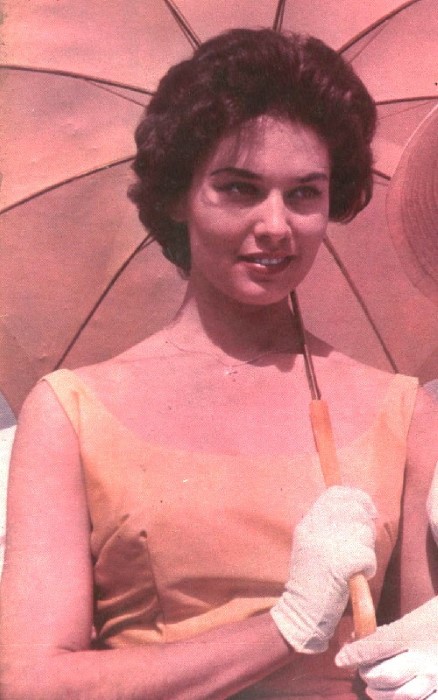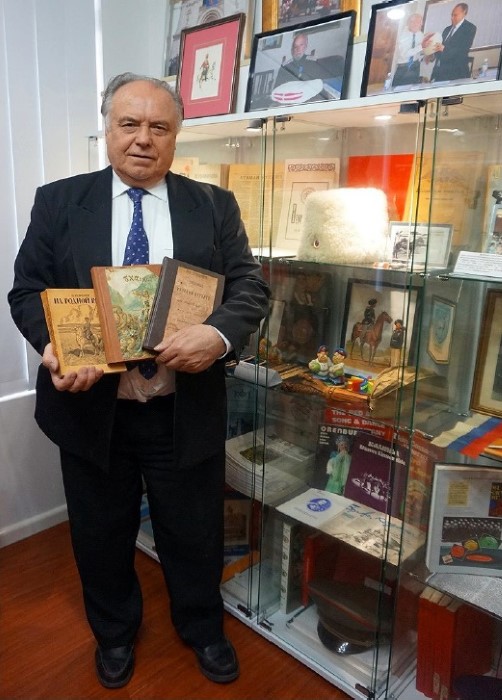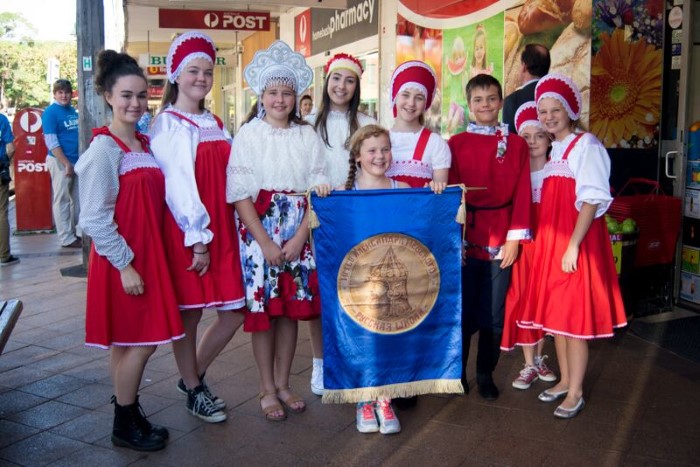
“Russian Language Schools Play a Special Role in Rallying the Russian Community”
/ Главная / Russkiy Mir Foundation / Publications / “Russian Language Schools Play a Special Role in Rallying the Russian Community”“Russian Language Schools Play a Special Role in Rallying the Russian Community”
Svetlana Smetanina
A guest at the conference celebrating the tenth anniversary of the Russkiy Mir Foundation, Ataman of the Associated Cossack Community in Australia and founder of the first Russian Museum in Australia, Mikhail Ovchinnikov, tells us how the Russophone diaspora in Australia took shape.
– Please tell us about the most dramatic lives of Russian emigrants in Australia: How did they manage to distinguish themselves?
– The Russian presence in Australia began 210 years ago, with the arrival of the sloop Neva in 1807. The influx of Russian immigrants to Australia mainly occurred after great political and historical shocks, such as the 1917 Russian Revolution, the Second World War, political changes in China, and the fall of the Soviet Union. During this time, many of arriving Russians made profound contributions to all spheres of Australia’s development: in science, culture, politics, society, and even the world of beauty—in 1961 the young Russian woman Tania Verstak, who had arrived from China, became the first Australian beauty queen from an immigrant background and went on to win the Miss Universe pageant.

Miss Australia (1961) and Miss Universe (1962), Tatiana Verstak
Many of Australia’s outstanding citizens of Russian heritage hold state prizes. In the sciences, one should first name the famous Russian academic and humanist Nicholas Miklouho-Maclay (19th century), who had a great influence on the development of the sciences in Australia and founded the first marine biology research station in the Southern Hemisphere. The entomologist Mstilav Ivanovich Nikitin came to Sydney in 1957. He studied Australian insects and discovered a new species of butterfly, which was named after him. Doctor Georgy Georgievich Kosov, who came to Australia in 1951, was a pioneer in developing ultrasound images. Like many other Russian scientists, he was awarded with the Order of Australia.
The Australian ballet was started by Edward Borovansky and his Russian wife Ksenia. After arriving in Australia with de Basil’s ballet company in 1938, they decided to stay here and found an Australian ballet. They opened the Academy of Russian Ballet in Melbourne in 1939. The famous Russian conductor Nikolai Andreevich Malko came to Australia in 1957 and became the lead conductor of the Australian orchestras. The outstanding pianist and music professor Alexander Sverzhinsky came to Australia from China, and in 1936 he began his work at the Sydney conservatory. Many of his students became famous Australian musicians.
Varlery Lebedev, who came to Australia from Europe after the Second World War, was recognized by the Australian government for his contribution to the development of Australian sports, especially volleyball, and the Australian Volleyball Federation established a cup in his name. Among later immigrants, the name of the famous boxer Kostya Tszyu is known to the entire world.
One cannot pass over the first woman to be president of Australian Council of Trade Unions, the Russian Jenny George—or former senator in the Australian Parliament Irina Dunn, who came from China at the start of the 1950s. And this is far from a full list of the Russian people who contributed to the cultural and social life of Australia.
One year ago, in Sydney, the first Russian house museum in Australia was opened. It brings together unique exhibits recounting the Harbin Russians, as well as the major figures and everyday experience of the Russian emigration in China and Australia.

Mikhail Ovchinnikov in the first Russian Museum in Australia (founded by him)
– To what degree could the Russian community be called cohesive? How can this be seen? What communal holidays and undertakings take place in this community?
– The Russian immigration was always primarily unified by the Russian Orthodox religion. For instance, a large number of Old Believers came to Australia, and they have their churches in Sydney and Melbourne. Upon arriving in Australia, Russian immigrants first began building Orthodox churches, around which a social life began to form: all kinds of circles were organized, and Russian language schools were opened. Later, there appeared clubs, theatrical and musical associations, youth organizations—such as the scouts and the “Knights.”

Russian Culture Celebration at St. Alexander Nevsky School in Homebush
Love for Russia, Russian traditions, Russian culture, and the effort to preserve the Russian language play a colossal role in the consolidation of the Russian immigration. Such holidays as Easter, Christmas, and the anniversary days of famous Russian poets and writers unite Russian immigrants. Russian language schools play a special role in rallying the Russian community. Since the fall of the Soviet Union, the Russian community has also started to celebrate together such holidays as Russia Day and Victory Day (9 May).
– How interested are descendants of the Russian emigration in preserving the memory of the historical homeland overall? Why is this important to them?
– Descendants of the so-called “old,” post-Revolutionary immigration were educated in a Russian manner and take pride in the fact that they are Russian. Each generation passes this “Russian-ness” on to the young people of the next. In Australia there are fourth- and fifth-generation Russian immigrants, the majority of whom maintain their Russian identity. That is, their “Russian-ness” defines who they are, and so it is important for them to maintain Russian traditions and to preserve the Russian language and culture.

Teachers and Students of the St. Alexander Nevsky School in Homebush
– Do their exist Russian schools in Australia? How many children attend them? Is the Russian language being preserved among the younger generation?
– In an effort to preserve Russian culture and their native Russian language, as well as to acquaint their children and grandchildren with this tradition, Russian immigrants founded Russian language (weekend) schools during their time in Australia. (They were called “Sunday schools” because the primary schools in Australia meet on weekdays.) Traditionally, these schools were founded together with the churches. Later, parental schools (organized by the parents) began to open, which strove to preserve the Russian language for their children. The opening of such schools can be traced to the 1950s. For instance, in Adelaide, the St. Nicholas Parochial School was founded at the end of 1949. In Brisbane, the St. Nicholas Russian Language School was founded by immigrants of the first post-WWII wave and opened again in 1950. In Sydney, the first metropolitan school opened in 1953.
Approximately 50 such schools run in Australia today, serving a total of nearly 2000 students. This year, 185 students are attending the largest of these schools, the St. Alexander Nevsky School in Homebush (in Sydney). Russian is also taught remotely in Australian state schools. Attending Russian language schools significantly enhances the younger generation’s ability to preserve the Russian language.
New publications

 Mikhail Kalatozov, a director who transformed the world of cinematography in many ways, was born 120 years ago. He was a Soviet film official and a propagandist. Above all, he was capable of producing movies that struck viewers with their power and poetic language.
Mikhail Kalatozov, a director who transformed the world of cinematography in many ways, was born 120 years ago. He was a Soviet film official and a propagandist. Above all, he was capable of producing movies that struck viewers with their power and poetic language.  Ukrainian authorities have launched a persecution campaign against the canonical Ukrainian Orthodox Church (UOC), the biggest one in the country's modern history. Over the past year, state sanctions were imposed on clergy representatives, searches were conducted in churches, clergymen were arrested, criminal cases were initiated, the activity of the UOC was banned in various regions of the country, and monasteries and churches were seized.
Ukrainian authorities have launched a persecution campaign against the canonical Ukrainian Orthodox Church (UOC), the biggest one in the country's modern history. Over the past year, state sanctions were imposed on clergy representatives, searches were conducted in churches, clergymen were arrested, criminal cases were initiated, the activity of the UOC was banned in various regions of the country, and monasteries and churches were seized.  When Nektary Kotlyaroff, a fourth-generation Russian Australian and founder of the Russian Orthodox Choir in Sydney, first visited Russia, the first person he spoke to was a cab driver at the airport. Having heard that Nektariy's ancestors left Russia more than 100 years ago, the driver was astonished, "How come you haven't forgotten the Russian language?" Nektary Kotlyaroff repeated his answer in an interview with the Russkiy Mir. His affinity to the Orthodox Church (many of his ancestors and relatives were priests) and the traditions of a large Russian family brought from Russia helped him to preserve the Russian language.
When Nektary Kotlyaroff, a fourth-generation Russian Australian and founder of the Russian Orthodox Choir in Sydney, first visited Russia, the first person he spoke to was a cab driver at the airport. Having heard that Nektariy's ancestors left Russia more than 100 years ago, the driver was astonished, "How come you haven't forgotten the Russian language?" Nektary Kotlyaroff repeated his answer in an interview with the Russkiy Mir. His affinity to the Orthodox Church (many of his ancestors and relatives were priests) and the traditions of a large Russian family brought from Russia helped him to preserve the Russian language.

 The leaders of the Friends of the Great Russia cultural association (Amici Della Grande Russia) in Italy believe that the Western policy of abolishing Russian culture in Europe has finally failed. Furthermore, it was doomed to failure from the beginning.
The leaders of the Friends of the Great Russia cultural association (Amici Della Grande Russia) in Italy believe that the Western policy of abolishing Russian culture in Europe has finally failed. Furthermore, it was doomed to failure from the beginning.  Name of Vladimir Nemirovich-Danchenko is inscribed in the history of Russian theater along with Konstantin Stanislavski, the other founding father of the Moscow Art Theater. Nevertheless, Mr. Nemirovich-Danchenko was a renowned writer, playwright, and theater teacher even before their famous meeting in the Slavic Bazaar restaurant. Furthermore, it was Mr. Nemirovich-Danchenko who came up with the idea of establishing a new "people's" theater believing that the theater could become a "department of public education."
Name of Vladimir Nemirovich-Danchenko is inscribed in the history of Russian theater along with Konstantin Stanislavski, the other founding father of the Moscow Art Theater. Nevertheless, Mr. Nemirovich-Danchenko was a renowned writer, playwright, and theater teacher even before their famous meeting in the Slavic Bazaar restaurant. Furthermore, it was Mr. Nemirovich-Danchenko who came up with the idea of establishing a new "people's" theater believing that the theater could become a "department of public education."  "Russia is a thing of which the intellect cannot conceive..." by Fyodor Tyutchev are famous among Russians at least. December marks the 220th anniversary of the poet's birth. Yet, he never considered poetry to be his life's mission and was preoccupied with matters of a global scale. Mr.Tyutchev fought his war focusing on relations between Russia and the West, the origins of mutual misunderstanding, and the origins of Russophobia. When you read his works today, it feels as though he saw things coming in a crystal ball...
"Russia is a thing of which the intellect cannot conceive..." by Fyodor Tyutchev are famous among Russians at least. December marks the 220th anniversary of the poet's birth. Yet, he never considered poetry to be his life's mission and was preoccupied with matters of a global scale. Mr.Tyutchev fought his war focusing on relations between Russia and the West, the origins of mutual misunderstanding, and the origins of Russophobia. When you read his works today, it feels as though he saw things coming in a crystal ball...